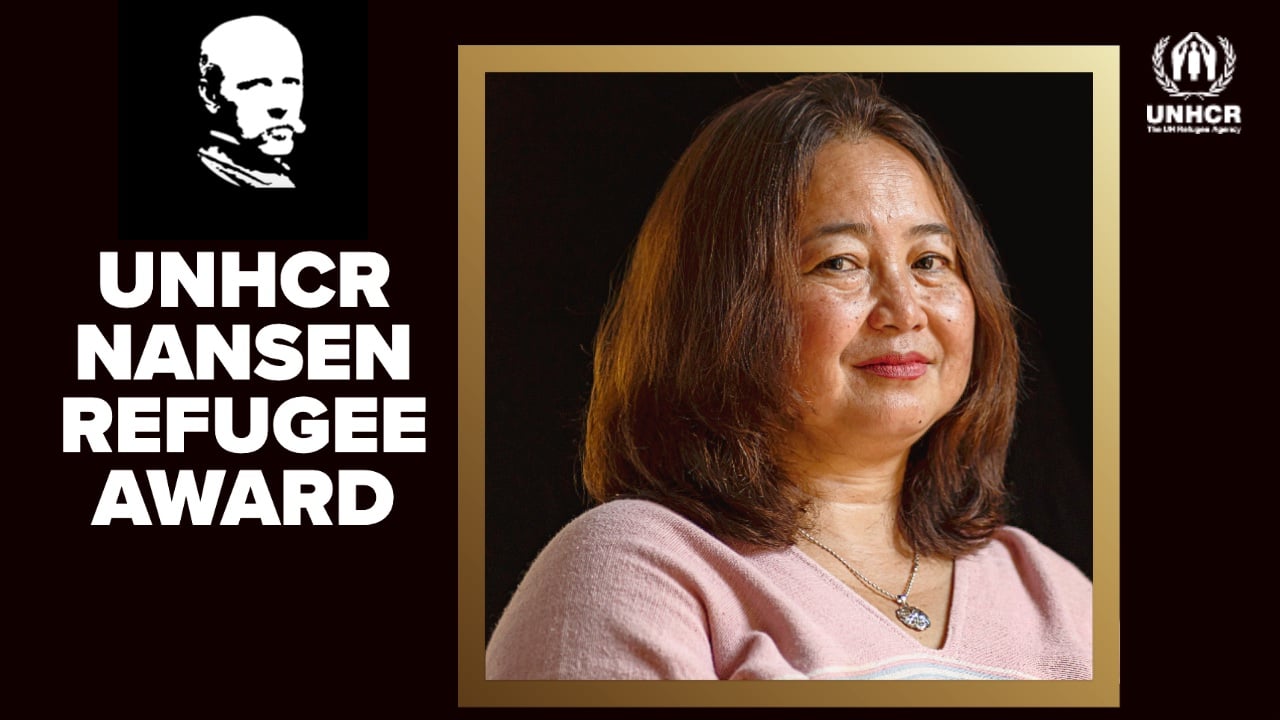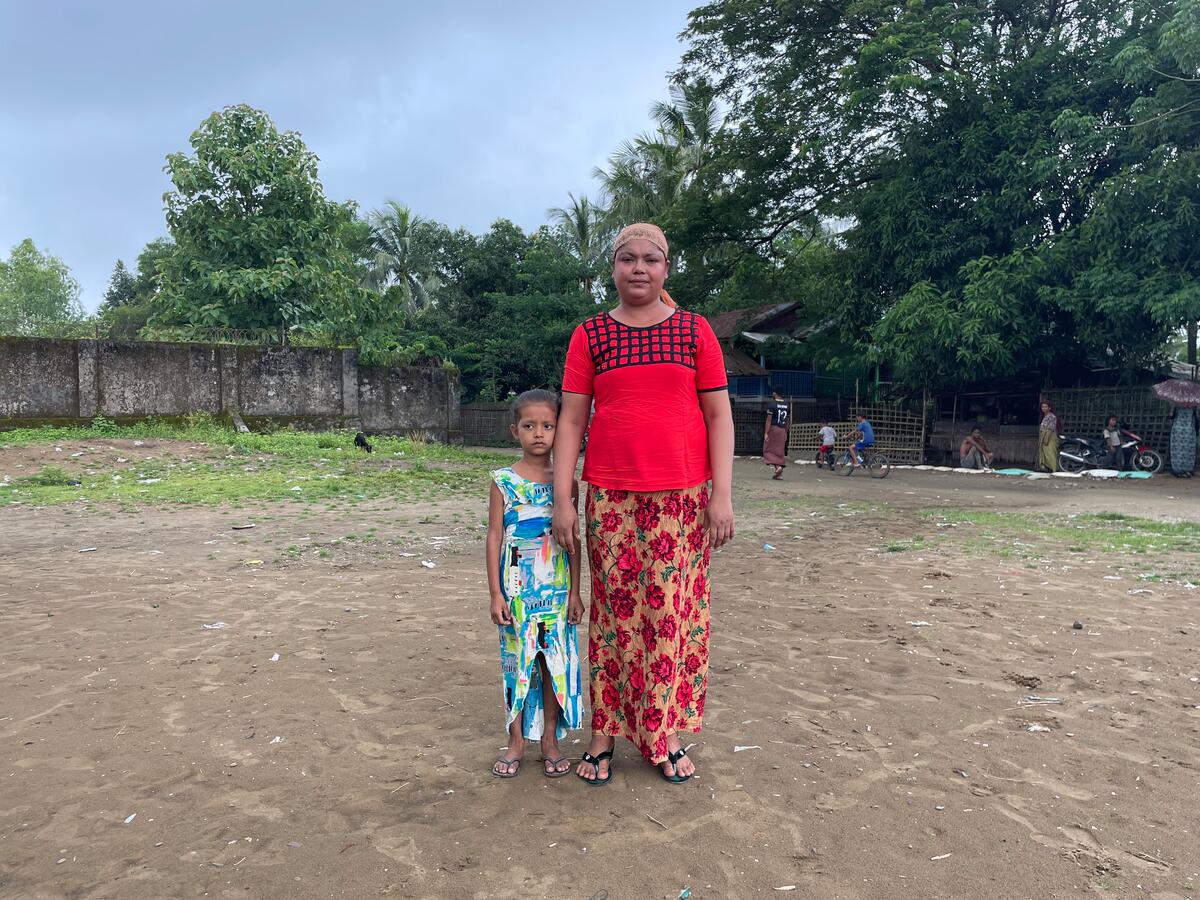60,000 Congolese in North Kivu spontaneous IDP site wait for better tomorrows
60,000 Congolese in North Kivu spontaneous IDP site wait for better tomorrows

KANYARUCHINYA, Democratic Republic of the Congo, October 8 (UNHCR) - Congolese widow Josephine still finds it difficult to believe that she and her seven children managed to survive fighting in North Kivu province that has forced hundreds of thousands to flee their homes since April.
But, while thanking God for sparing them, she feels as though she is now living in a kind of purgatory in the wretched, sprawling site for internally displaced people (IDP) that has sprouted up spontaneously since July in and around the village of Kanyaruchinya, located about 10 kilometres north of Goma, the provincial capital.
"We are no longer living, we are simply trying to survive while waiting better tomorrows," she told UNHCR in Kanyaruchinya, which now has a population of around 60,000 people, who lack sufficient shelter, food, water and other basic aid, but are reluctant to move to established IDP sites. Most of the IDPs live in makeshift shelters on each side of the street that runs through the village while some sleep at night in the village school.
It is the largest of many spontaneous settlements that have been set up by civilians fleeing the running battles since April between government troops and the M23 group of mutineers as well as generalized violence and human rights abuses that have left 390,000 people internally displaced in eastern Democratic Republic of the Congo, including 220,000 in North Kivu. Some 60,000 people have fled to Rwanda and Uganda.
UNHCR, the local authorities and others have encouraged the new residents of Kanyaruchinya to move to IDP camps in relatively safer areas, such as Mugunga III some 20 kms to the west, where families are regularly fed and assisted and have access to basic services while waiting to return home.
"We worry about the viability because of its proximity to the fighting and, among other reasons, due to the difficulty in providing enough potable water," said Etien Lazare, head of UNHCR's Goma office. But despite the concerns, UNHCR and its partners are looking at ways to support the IDPs at Kanyaruchinya and recently organized a mission to assess the needs there.
Most of the IDPs at Kanyaruchinya are reluctant to move because they say it is closer to their homes. Many have been displaced multiple times and it has almost become a way of life; they are just waiting to return, preferably from somewhere close.
Josephine and her family, for example, come from the town of Kibumba, 30 kms north of Goma in Rutshuru territory, where a lot of the clashes have taken place since April and where it remains difficult for UNHCR staff to reach IDP sites. But she longs to return, harking back to a happier life in her own humble home despite the trauma of flight.
In July, M23 fighters pushed government troops back across Rutshuru and advanced towards Goma, capturing Kibumba along the way, before later withdrawing. "We fled to save our lives," Josephine said. "There was fighting everywhere and we were all scattered," she added, shaking her head.
But although Josephine and her children are now relatively safe, they are desperately in need of assistance. That's why, to meet anticipated needs until the end of the year, UNHCR last month launched an appeal for an extra US$7.4 million for its emergency operations to help 400,000 IDPs in the east.
"It's been a month-and-a-half since we arrived in Kanyaruchinya and we are suffering. We lack enough water and we are hungry," Josephine said. She showed UNHCR the shelter which she and her children live in, a cramped dwelling made of wood and plastic sheeting. "We all sleep together [in two square metres of space]. It gets very cold at night but we have no choice but to sleep on the floor - it's very difficult," Josephine said, her voice breaking.
UNHCR's funding appeal includes emergency shelter for 40,000 households in North Kivu and Orientale Province to the north as well as basic domestic items for 15,000 households.
At the start of the year, Josephine was happy and felt she had plenty. "At home, we grew vegetables, beans, potatoes and sweet potatoes and we ate when we felt hungry. But here, we eat only these [high energy] biscuits [distributed by the World Food Programme] and we are crammed into this small space," she complained.
But instead of hanging around and hoping for aid to arrive, the resourceful widow and mother is trying to do something to feed her family. "We have to survive somehow," she said, while revealing: "I do domestic work for some of the locals and collect firewood to sell."
Viviane, aged 56, also fled to Kanyaruchinya from her home near Kibumba, and refuses to move to Mugunga, because, as she explains, "here I am not so far from my home." She and her three children have been sleeping in Kanyaruchinya's primary school, vacating the classrooms during the day so that the local children can attend lessons. It's not an ideal arrangement.
Josephine shares Viviane's dream of returning home, but so long as the insecurity and violence remain, they will continue to need help. International support thus remains crucial while a political solution is sought.
By Simplice Kpandji in Kanyaruchinya, Democratic Republic of the Congo








